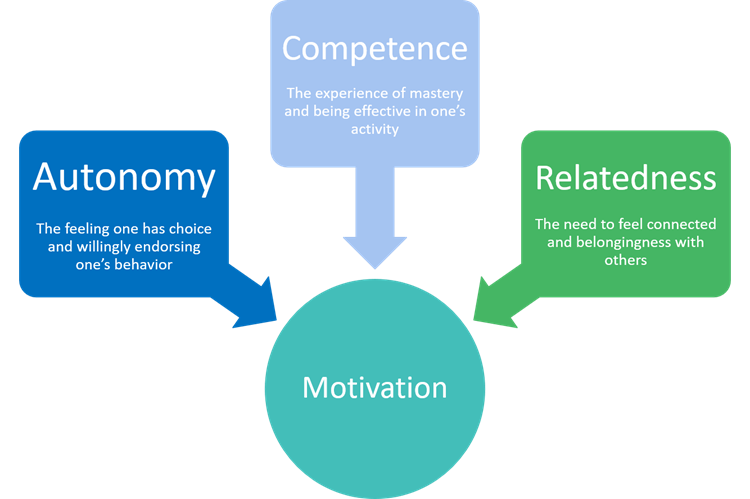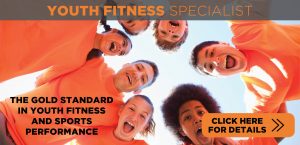Setting the Foundation for Motivating Athletes
I want to walk you through a situation that happens to me often in the gym:
I see my athlete, Drake, and his heels are coming off the floor as he transitions from the eccentric to the concentric portion of the squat.
So I cue him: “drive down through the floor to stand up.”
Now I walk away to coach someone else since his set is done. 
A few minutes later, I am watching from a distance and I see after his second rep, his heels come off the floor. But then rep 3, 4 and 5, he adjusts and plants that foot hard into the floor, not only coming up more balanced, but faster!
I’m PUMPED!!!!
So after the set I go over, give him a big high five and ask, “Man Drake, did you feel that? You came up so fast and stable, that was great!”
And he goes, “Um yeah I guess I felt that…”
Ever happen to you?
Here’s the thing, almost no one we train is going to get as excited about squatting or a perfectly executed wall drill as we are.
But motivation, or “buy-in” as it’s been termed, is CRITICAL if we want our athletes to excel and stick with us for the long haul.
And if we want to improve “buy-in,” with ANYONE, we need to satisfy three components on a regular basis: relatedness, competency and autonomy.
- Relatedness: our ability to connect with the individual’s interests, desired outcomes and pain points
- Competency: providing the structure to develop knowledge and skill sets beyond their current baseline, ideally with carryover to performance and resiliency
- Autonomy: establishing guidelines and boundaries so the individual can take ownership in achieving the desired outcome

These basic needs were recognized by Dr. Edward Deci and Dr. Richard Ryan, as important factors for increasing motivation levels in individuals and necessary for optimal growth and function. (see Self-Determination Theory)
For the typical coach, you are going to have three scenarios where it is your job to make sure motivation levels are consistently improving i.e. “increasing buy-in”:
- Coach to Staff
- Coach to Athlete
- Staff to Athlete
This short video will help explain these concepts and scenarios, and set up a series on how to implement this information.
In the following video,s and the upcoming series on this topic, I will walk you through some simple action steps and the goals associated to create better buy-in. We will explore the differences between how you will approach each of the scenarios (coach-staff, coach-athlete, staff-athlete) for the three components (relatedness, competency, autonomy) so that you can slowly apply these techniques for each situation.
By taking and applying these concepts, you will develop stronger, long-lasting relationships with both your athletes and staff – the key to making a big impact on our industry!
Let’s begin with the concept of Relatedness.
Relatedness: Coach to Staff

When creating “buy in” from your staff, it’s important for them to understand your past: where have you been, what have you done and what have you learned.
You want them to know you can relate to them. More importantly, you want to shorten the learning curve.
You have career capital to call upon, both good and bad. Give them a jump start by emulating your good experiences and applying the lessons behind the bad ones. As the Golden Rule states, “do unto others as you would have done unto you.”
And since we are talking the Golden Rule, listening and learning is a two-way street! EVERYONE loves to tell their story. So ask where they came from, what they have done and what they have learned. You will go further faster than ever before.
Action Step: Consistent conversations with your team or staff. Schedule them if necessary. We call ours “Huddles”
Goal: Learn and apply the knowledge you have gained to strengthen the common ground you all stand on TOGETHER!
Relatedness: Coach to Athlete
Scenario #1:
Coach – “Hey, how was school today Camryn?”
Camryn – “Good” –without ever looking up from her phone…
Scenario #2:
Coach – “Hey Camryn, I see you are on your phone, who is your favorite person to follow on Instagram?
Camryn – “Huh? You really want to know? Um, well it’s this hockey player but you don’t probably know her”
Coach – “Probably, but if you like her, I’m curious why. What makes her interesting to follow?”
Pretty easy to see which series of questions is going to stimulate a conversation and develop a level of relatedness not often achieved between adult and teenager.
When conversing with your athletes, you have to meet them where they are. We are NOT working with mini adults, despite what they might want you to believe!
Asking questions relevant to things they care about may take some work on your part. But aren’t the greatest teachers and parents making that kind of effort everyday? Why wouldn’t you, if you are a great coach?
Additionally, technology interrupts every social setting a teenager encounters. So when you do get an answer from them, give your undivided attention and ask follow up questions. You will be amazed how effective this can be!
Action Step: Have five go-to questions to create a conversation (adjust and replace as needed)
Goal: Achieve a response that leads to a brief conversation (at least) from all of your athletes in a reasonable amount of time. If possible, jot down some notes to study and recall later.
For some coaches with only a few athletes, the goal above might mean you need to get creative and you should have a conversation like this multiple times a week. For other coaches, who are in charge of 200 athletes across various sports, this may take some time.
Know your situation and adapt to it!
Relatedness: Staff to Athlete
“Oh man, Coach Jared is training us today! Where’s Coach Max, he’s way more fun!”
Music to my ears ☺
As you transition off the training floor, you don’t need to go out of your way to be an a$$hole coach. Let’s face it, there are plenty of a$$holes in this world already.
Instead, if you empower your staff to develop stronger relationships with your athletes, the above scenario will become more and more common over time.
So how do we get through the double whammy of getting coaches to “buy in” to the idea of getting our athletes “bought in?”
My answer: coCompetition and prizes!
Action Step: Create a challenge where the staff member is expected to get and recall responses from Athletes. To get started, you need three things
What your staff values for prizes
Parameters set: time, amount of touches/recalls, information expected
Opportunity to test and measure it!
For Example:
Performance coaching staff loves burritos (wait what coaches DON’T love burritos!) So the prize is a $25 gift card to Chipotle
Parameters:
Duration: Month of June
Info: Favorite pet/Favorite show/Favorite food
Goal: Ask 75% of their athletes (you calculate the number for them) and expect them to recall five of them at the end of the month.
Give them a spreadsheet to write these down but tell them they can track the info however they like
Test it: Any coach that gets all 75% and recalls the five randomly selected athletes gets a gift card to Chipotle
Goal: Increase trust level between athletes and staff without your involvement.
These videos and descriptions should give you a fairly thorough understanding of how to integrate the concept of Relatedness to multiple situations. Stay tuned for the rest of this series when we address Competence and Autonomy.
 Jared Markiewicz is the founder and CEO of Functional Integrated Training, in Madison, WI. Jared has worked with a wide array of athletes including middle schoolers, collegiate and professional athletes, as well as adults – all looking to find the best version of themselves. He sits on the IYCA Advisory Board, has gone through many IYCA certifications, and is a regular contributor and speaker for the IYCA.
Jared Markiewicz is the founder and CEO of Functional Integrated Training, in Madison, WI. Jared has worked with a wide array of athletes including middle schoolers, collegiate and professional athletes, as well as adults – all looking to find the best version of themselves. He sits on the IYCA Advisory Board, has gone through many IYCA certifications, and is a regular contributor and speaker for the IYCA.
Jared holds a Bachelor of Science in Kinesiology with an emphasis in Exercise and Movement Science from the University of Wisconsin-Madison. He’s also a Certified Personal Trainer through the American College of Sports Medicine (ACSM-CPT), an Advanced Sport Performance Coach through USA Weightlifting, a Level 2 Functional Movement Screen Specialist, a Precision Nutrition Level 1 Coach (PN1) and a golf fitness instructor through Titleist Performance Institute.
If you want to be better at coaching young athletes, the IYCA Youth Fitness Specialist certification is the industry gold-standard for youth fitness and sports performance. Click on the image below to learn more about the YFS1 certification program.


